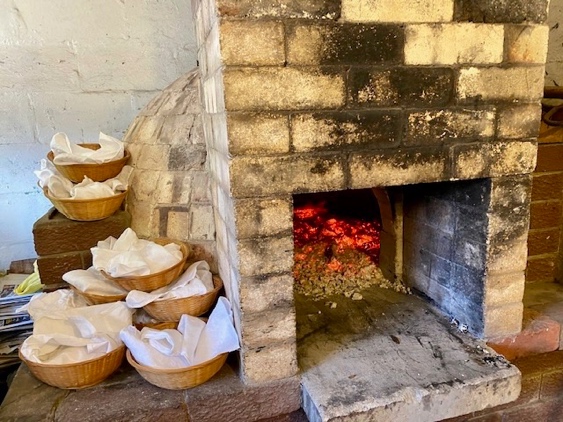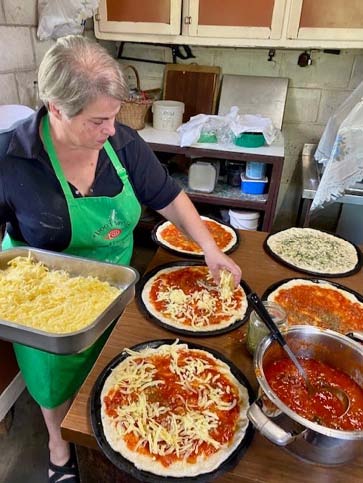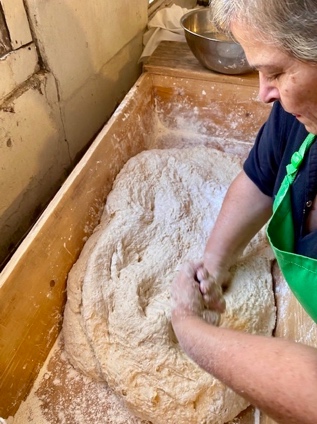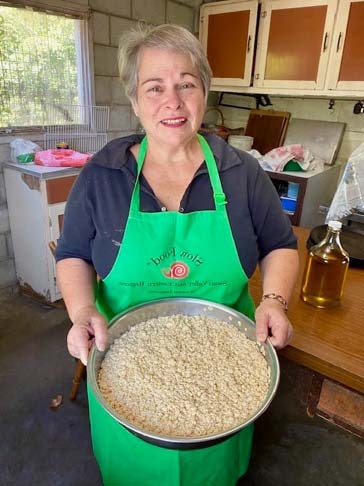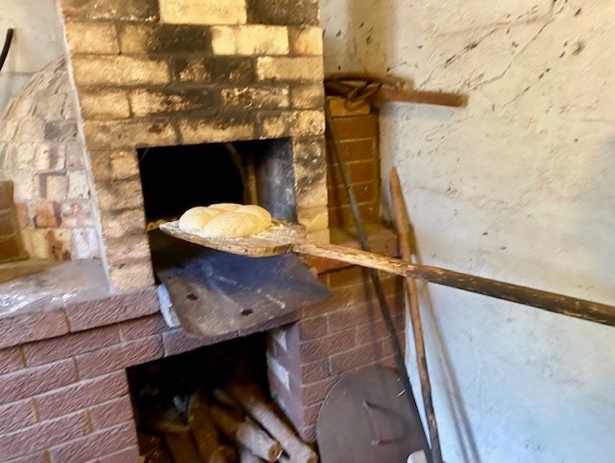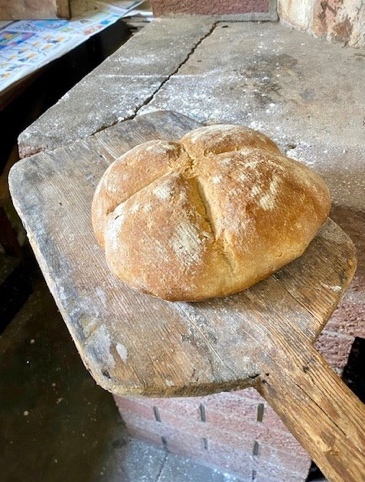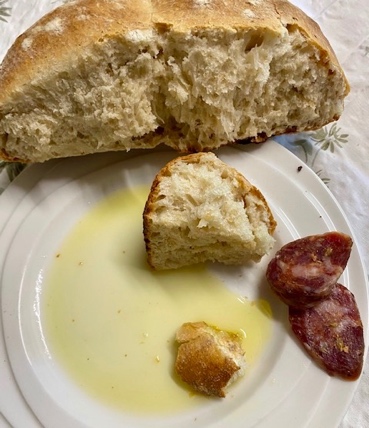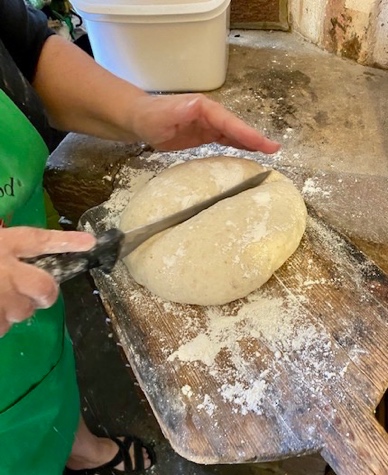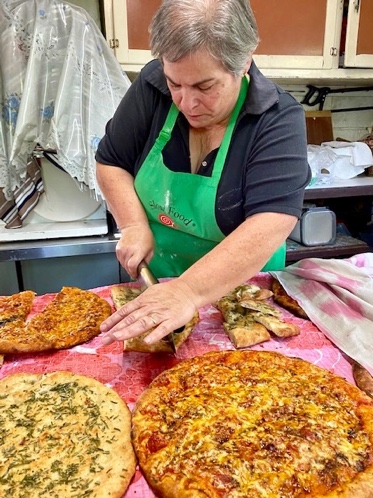
A food memory story from Lucia Procopio
Lucia Procopio’s practice of making bread in Australia stems from what she learned from her family’s traditions in Pietracupa, Catanzaro Province, Italy, prior to her arrival in Sydney in 1952.
Lucy says: My family grew wheat, maize, potatoes, beans, chestnuts, cherries, figs and grapes and many other vegetables and fruit. We were almost self-sufficient and always ate food in season.
Both men and women cut the wheat by hand; it was taken to a horse driven grindstone to remove the grain. The whole family were involved in cleaning and sorting the grain. The flour was produced at a water mill owned by my father’s grandfather who built it in the late 19th century. Families paid for milling by measuring quantities in special containers rather than by weight.
Each family in this village had their own bread oven, made of local stone, some bought bricks and a special white clay from the river. I remember gathering wood from the forest for the oven. Yeast was prepared the night before, from our “lievito” that was kept from the dough from the last batch baked.
When I was about 14, I participated in the bread making, but I was still too short to lift the bread into the oven using the long handled wooden paddle, “pala”. We would light the fire “forno” first, located in a separate room off the house. We would use 10 to 14 kilos of flour to make enough loaves for a week. We’d make flat ones to eat first and share with grandparents and aunts and uncles and other villagers. When they made their bread on a different day, they would share their bread with us. Next we’d make 10 or 12 larger loaves.
We had a large wooden trough with sloping sides to mix the dough. In Italy it was often made from one tree that had been carved so that the trough never leaked. When the dough was ready, it was placed on a table in the warm room to rise.
What I remember most about Italy was the number of children that hung around while the bread baked. We made small rings of bread especially for the children, who received their share first. Maize bread was more demanding, as we had to place chestnut leaves on the bread paddle under each loaf. Lowering the bread into the oven with the leaves intact took special skill.
Bringing the tradition to Australia
In our home in Mundaring we had enough land to build our own breadmaking rooms. My husband built the oven out of fire bricks, and we fitted another room with a table, fridge, sink and hot and cold water. We bought our flour in 50kg bags from a mill in Northam, which sold special bread-making flour. We had a local cabinet maker make a wooden bread trough to mix the dough.
Our starter yeast came from Calabria and was shared among the local women here in Australia. However, over time, I started using commercial dried yeast, as I changed to a mixture of wheat and oats. As well as feeding my family of 8, I also provided bread for family and friends.
A typical day was starting with 10 or more pizzas, then flat bread which cooked quickly and then the loaves that took longer and formed a good crust. This bread had no preservative. One day I started with 28 items of bread and by the end of the day there were only 7 left. People seemed to know when bread making was on and we had lots of visitors that day.
On the pizzas, I always used my own passata. We grew tomatoes and in one memorable season we had a huge crop and produced 500 bottles of passata. My favourite pizza was a simple one with homemade tomato sauce, cheese and oregano.
Method for sauce
Cook onions in olive oil, add salt, the passata which already has basil, cook until thickened. 1 kg of cheese to 10 pizzas. Add home grown, dried oregano. Of course my children liked me to add pineapple and ham.
My daughter Zelinda still makes bread in this traditional way 2 or 3 times a year. I remember working with Zelinda and another Italian family to prepare for a wedding: in one day we cooked 40 pizzas, 7 loaves of bread, and a biscuit recipe that took 50 eggs. This was done in one day, using one bread oven with just one wood burn. What I remember most is that no family celebration took place without homemade pizzas.
Interview and photos by Pamela Buselich
View recipe here:


